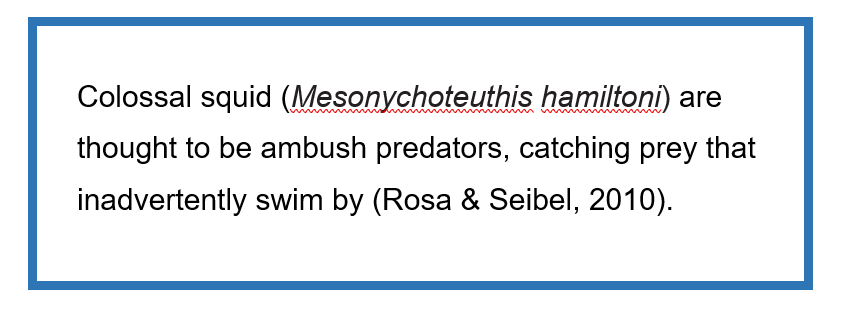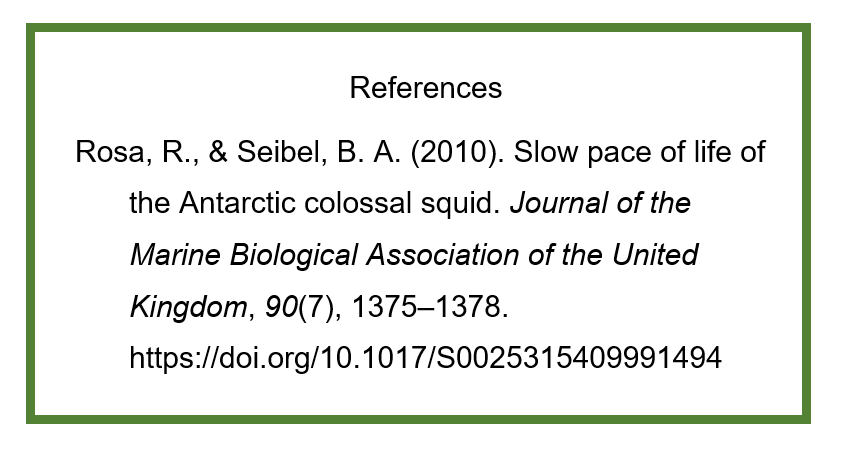4.2 Citation Basics
What is a citation?
Citations are a short way to uniquely identify a published work (e.g. book, article, chapter, web site).
There are two parts to any citation: an in text citation and a reference list citation
1. In text citation – a shortened citation that appears in the body of your work and points readers to the reference list

2. Reference list citation – longer citations that appear at the end of a paper and provide enough information needed to describe and find your source again, physically or online.

What goes into a citation?
Citations consist of standard elements. A citation contains all the information necessary to identify and track down publications, including:
- author name(s)
- titles of books, articles, and journals
- date of publication
- page numbers
- volume and issue numbers (for articles)
- DOI (a unique identifier for each article)
Citations may look different, depending on what is being cited and which style was used to create them.
When should you cite a source?
You should cite your sources whenever you take words, ideas, figures, images, etc. from another place.
What information do you cite?
You must cite:
- Facts, ideas, or other information that comes from a resource or publication
- Figures, images or tables that were created by another person
- Any exact wording or quotations that come from a resource or publication
You do not need to cite:
- Information that is common knowledge for your subject area (ie. DNA has a double helix structure, squids are a type of mollusc)
Tip
When in doubt, be safe and cite your source!

